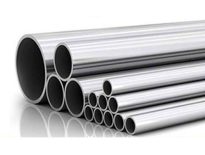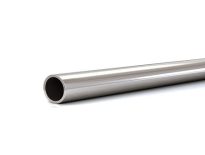Nickel-chrome-based Inconel has excellent corrosion resistance, oxidation resistance, strength under high temperatures, and creep resistance. Due to two reasons, Inconel can tolerate high temperatures and severely corrosive conditions. Because of the passivation layer that occurs when Inconel is heated, it possesses excellent corrosion resistance. Inconel alloys are designed for applications ranging from hot segment power plants to ocean depths well drilling because of these two features.
Types of Inconel
Inconel 600 Tubes is an alloy that’s really good at handling heat, corrosion, and all the other things that can wear down your machine. It’s great for high-temperature environments like boilers, heaters, and gas turbines, and it doesn’t crack or lose its strength even at low temperatures.
This material is particularly useful for chemical and heat treatment equipment due to its high strength under 650 degrees Celsius, easy formability, and simplicity of soldering.
The controlled carbon content and grain size of Inconel 601 provide excellent resistance to oxidation at high temperatures, good resistance to carbonization, good resistance to oxidizing sulfurous atmospheres, and excellent strength under stress corrosion cracking.
The Inconel 601GC (Grain-Controlled Inconel 601) is a grain-controlled version of Inconel 601.
A good mixture of nickel, chromium, cobalt, and molybdenum, Inconel 617 is a highly corrosion-resistant alloy. Moreover, this alloy is resilient to oxidation and carbonization under high-temperature conditions.
Nickel-chromium-molybdenum-tungsten Inconel 686 is a corrosion-resistant alloy that offers excellent resistance to stress corrosion, pitting corrosion, and combined acid corrosion. Inconel 686 is a corrosion-resistant alloy that is widely utilized in the chemical sector, marine, and poor air quality management.
Chloride corrosion, temperature, high water stress corrosion, strong oxidizing media, and HNO2-HF mixed corrosion are all resistant to Inconel 690. In the nuclear waste treatment system, steam generators, and parts resistant to nitric acid, this alloy is frequently used.
Despite its excellent corrosion and oxidation resistance, Inconel 625 also has excellent tensile and flexural properties at low temperatures, even at 980 °C, and it has excellent resistance to strain corrosion in a saline environment.
Despite its hardness, flexibility, and tensile strength, Inconel 725 can all be significantly enhanced by heat treatment by aging the alloy. Alloy toughness, tensile strength, and flexibility can all improve considerably with aging.
Inconel 740 is a nickel-chromium alloy that has extraordinary oxidation and carbonization opposition at high temperatures. The gamma stages of this alloy precipitate make it age hardening. Due to its high chromium and cobalt content, Inconel 740 provides exceptional resistance to oxidation, carbonization, and vulcanization at high temperatures.
This precipitation-hardening alloy is similar to Inconel alloy 750 and is primarily used for exhaust valves on internal combustion engines, it as well as having good abrasion resistance, durability, and corrosion resistance.
Inconel 783 is made to withstand corrosive environments, and it won’t warp from heat or cold like some metals can. It also has a low coefficient of thermal expansion, which means that it won’t expand or contract much with changing temperatures. This is important for turbine applications because we want the turbine to be able to function properly across a wide range of temperatures.
Below 980 degrees Celsius, Inconel X-750 has excellent corrosion and oxidation resistance, as well as strong strength. Inconel X-750 is primarily utilized in aerospace and industrial gas turbine components because of its excellent low temperature and molding properties.


